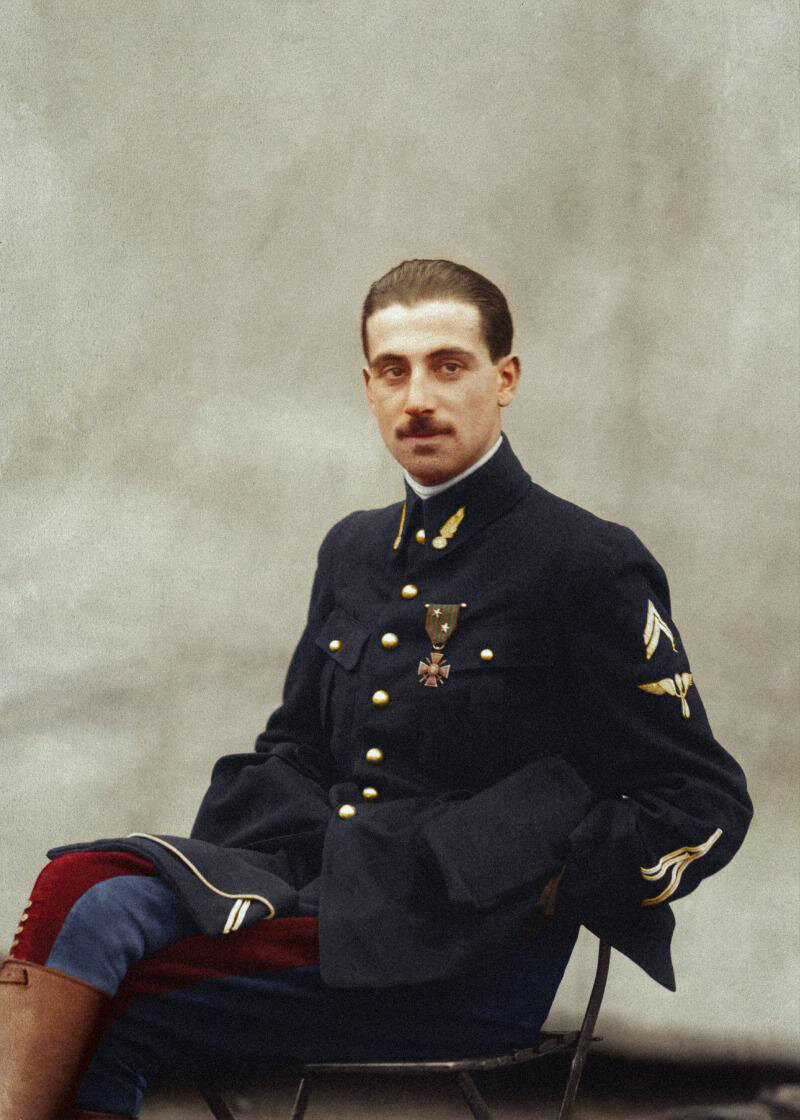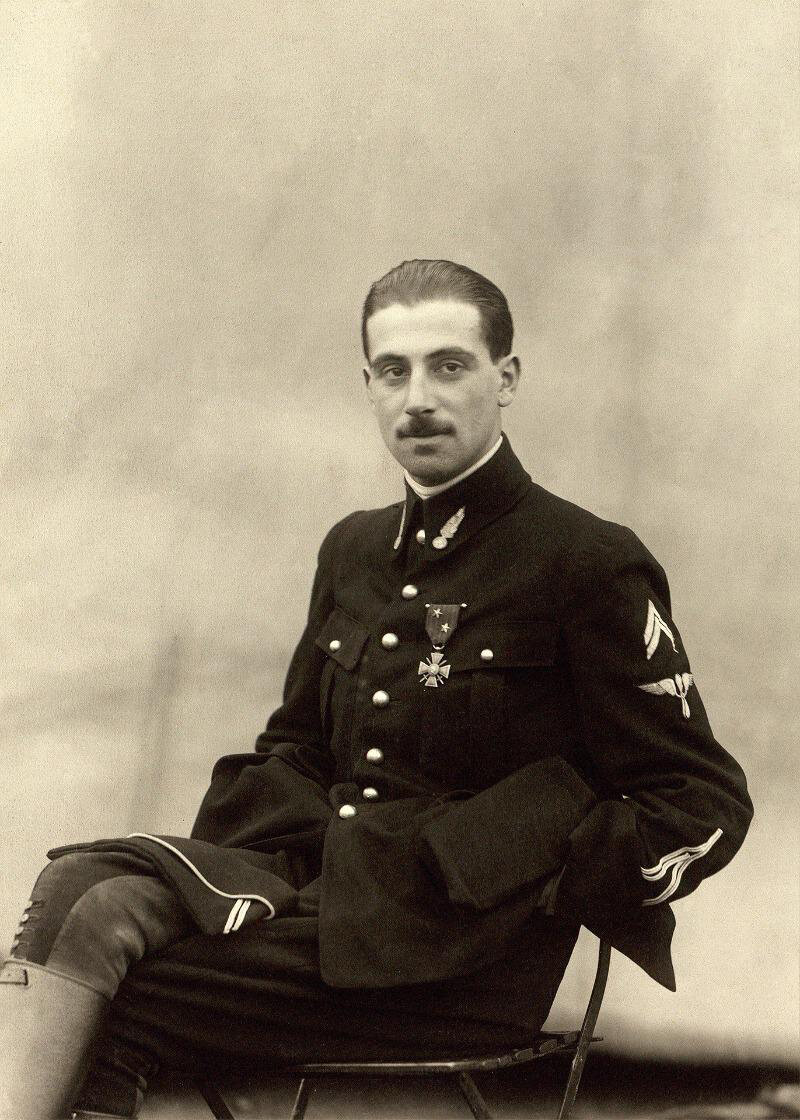The House of Fragile Things: James McAuley (1942)
James McAuley, author of The House of Fragile Things, describes the dilemma that Béatrice de Camondo faced in 1942.
In this episode the author and journalist James McAuley takes us back to a moment of crisis in war-time Paris. For years Jewish families like that of the wealthy heiress Béatrice de Camondo had tried to confirm their position in French society. But after the Nazi conquest of France in 1940 and the establishment of the anti-Semitic Vichy regime, their status was gone. As round ups became a terrifying feature of daily life in Paris, just who could truly consider themselves safe?
*** [About our format] ***
It is hard to overstate how sudden, how shocking and how total was the Nazi defeat of France in the summer of 1940. During the First World War years had passed with little movement in the military lines. But in just a few days in June 1940, the entirity of France fell under German control.
In the months that followed French citizens were forced to come to terms with a new political reality. The northern and coastal sections of the country were controlled by the occupied forces, while a Free French state was established to the south. This was governed by a fiercely right wing, collaborative and anti-Semitic government, based in the gilded resort town of Vichy.
Round up of Jews in Paris, August 1941. (Bundesarchiv)
All French people were confronted with the dilemma of how to respond to these new circumstances. For France’s Jewish population, the situation was particularly grave. In recent years increasing numbers of Jewish migrants had been arriving in France, seeking refuge from racial prejudice and the open persecution of the Nazi regime. These more recent arrivals joined the more established Jewish families, who were often people of status and wealth in the great cities like Paris and Lyon.
Among such families, few were as prominent and wealthy as the de Camondo. Over three generations, ever since Moïse de Camondo’s arrival in Paris from Constantinople in the 1860s, the family had played an active and prominent role in French life. Fabulously wealthy from their banking empire in the East, Moïse had become one of Paris’s premier art collectors, with the finest works of Ancien Régime art decorating the walls of his mansion on the Parc Monceau.
In this episode, James McAuley analysed what Moïse de Camondo was trying to achieve with his collections. Was it a mere passion for art? Or was it something deeper?
More particularly he tells the disturbing story of Moïse’s only daughter, Béatrice.
Following the death of her elder brother, Nissim de Camondo, in action during the First World War, Béatrice was left as her father’s heir. As the Nazi forces swept across north eastern France and entered Paris, Béatrice was left as the custodian of the family’s honour and possessions. Her decision was to remain in the capital at all costs. ‘I am sure’, she wrote to a friend in 1942, ‘that I am miraculously protected.’
Here McAuley explains more about this story and describes what it meant to be an israélite in early twentieth-century Paris. He shares newly-discovered materials about Béatrice in the fateful year 1942 and he describes what happened to her shortly after.
*
Click here to order James McAuley’s book from John Sandoe’s who, we are delighted to say, are supplying books for the podcast.
*** Listen to podcast ***
Show Notes
Scene One: 16 July, 1942. Paris. The Vel d’Hiv roundup of Parisian Jews.
Scene Two: 5 September, 1942. The forest of Ermonville. Béatrice de Camondo writes a letter to a childhood friend.
Scene Three: The night of December 5, 1942. Neuilly-sur-Seine. Béatrice de Camondo arrested with her daughter, Fanny.
Memento: The library of Theodore Reinach at the Villa Kerylos, ransacked by the Gestapo during the War.
People/Social
Presenter: Peter Moore
Guest: James McAuley
Reading: Nadia Fontaine
Producer: Maria Nolan
Titles: Jon O
Follow us on Twitter: @tttpodcast_
Or on Facebook
Podcast Partner: ColorGraph
See where 1942 fits on our Timeline
About James McAuley
James McAuley is the Paris Correspondent for the Washington Post and a contributor to The New York Review of Books. He recently received his doctorate in French History at Oxford. This is his first book.
Jordan Lloyd’s image of Nissim de Camondo
Nissim de Camondo was the elder brother of Béatrice. He served in France’s airforce in World War One and he was killed in action in 1917. This formal portrait shows him shortly before his death. He is wearing the French War Cross with two vermeil stars.
Image produced by Jordan Lloyd of Colorgraph for Travels Through Time.
Portrait of Mademoiselle Irène Cahen d'Anvers by Pierre-Auguste Renoir - as discussed in the episode. (WikiCommons)
Listen on YouTube
Complementary episodes
When Time Stopped: Ariana Neumann (1944)
This deeply moving episode of Travels Through Time, Ariana Neumann tells for the very first time the absolutely extraordinary story of her father, Hans, a young Jewish man from Prague, who managed to outwit the Nazis and survive the Holocaust.
Wolfson Prize Special: Prof. Mary Fulbrook
In this special Wolfson History Prize episode we talk to Professor Fulbrook about Reckonings, a book that she wrote filled with a sense of ‘moral outrage’. In a twist on our usual format, we examine the Nazi genocide through three human interactions with three crime scenes: a ghetto, a labour camp […]
The Liberation of Ravensbrück: Selma van de Perre (1945)
Meet the extraordinary Holocaust survivor and resistance fighter Selma van de Perre. At the age of ninety-eight, three quarters of a century after she was liberated from Ravensbrück Concentration Camp, Selma tells her remarkable story to the New York Times bestselling author Ariana Neumann.
Click here to order The House of Fragile Things by James McAuley from our friends at John Sandoe’s Books.
The Camondos, Rothschilds, Ephrussis and others amassed superb collections which in many cases they left to the state that betrayed them. (John Sandoe’s)









